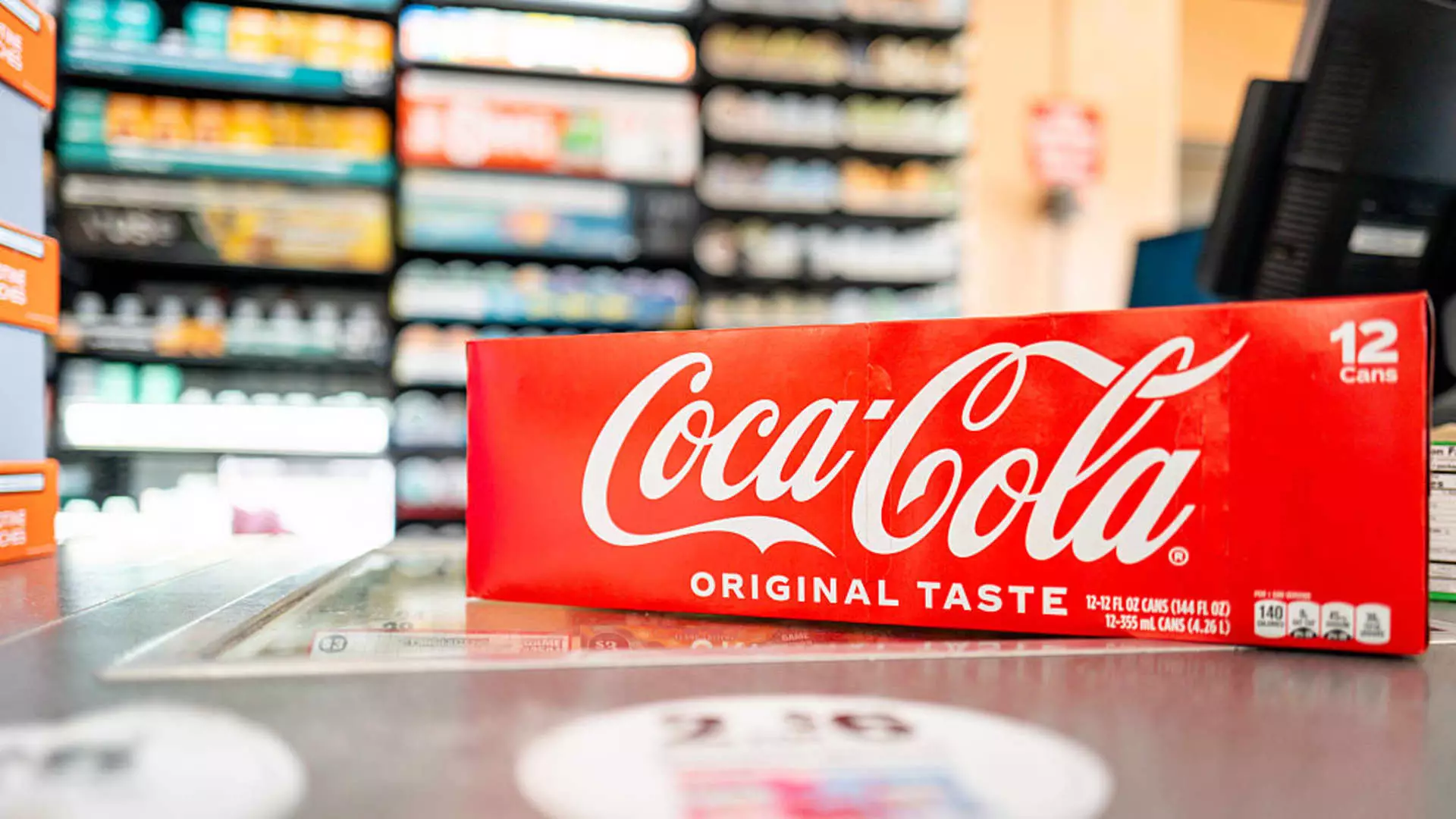Coca-Cola’s latest earnings report appears, at first glance, to showcase a narrative of resilience and growth. The company surpassed Wall Street’s earnings and revenue expectations—adjusted EPS at 87 cents against 83 cents anticipated, and revenue hitting $12.62 billion versus the expected $12.54 billion. This may seem like a cause for celebration, but a deeper analysis reveals a troubling reality: the numbers are primarily a reflection of manipulation through pricing strategies and currency adjustments rather than genuine demand growth. While Wall Street celebrates short-term beats, the long-term health of Coca-Cola’s empire is far from secure.
The reality is that despite these “better-than-expected” figures, actual volume figures paint a different picture. Global unit case volume declined by 1%, and in some of the most significant markets—Latin America and Asia-Pacific—volumes shrank by 2% and 3%, respectively. These figures reveal a fundamental erosion of consumer demand, emphasizing that the revenue growth is more about price hikes and currency fluctuations than real consumption. This scenario underscores the fragility of Coca-Cola’s current success and indicates a market that is increasingly less inclined to sustain its brand loyalty in the face of economic adversity.
Market Dynamics and Consumer Confidence: The Battle for a Diminishing Market
Coca-Cola’s CEO, James Quincey, alludes to macroeconomic factors that are dampening consumer confidence globally, including geopolitical tensions and economic uncertainties. Such conditions traditionally signal a potential long-term downfall for consumer staples, which rely heavily on steady demand. Yet, the company claims that some markets, such as the U.S. and Europe, have shown improvement, bolstered by targeted marketing and strategic pricing. While these efforts may stabilize revenue temporarily, they do little to address the root cause: a waning consumer base that is increasingly cautious with discretionary spending.
The dip in North American demand, particularly among lower-income segments and Hispanic consumers—who pulled back on Coke due to false social media accusations—highlight the thin margin for error Coca-Cola faces. These incidents expose how fragile consumer trust is, especially when misinformation and social tensions influence purchasing behavior. For a company built on branding and emotional connection, such trust erosion could have enduring repercussions that no superficial marketing campaign can easily repair.
Furthermore, the decline in volume across key regions and product categories—particularly in juice, dairy, and plant-based beverages—suggests that Coca-Cola’s diversified portfolio is not immune to changing tastes and economic pressures. While the water and coffee segments showed flat or positive performance, they do little to offset declines in more traditional core products. This signals a shift in consumer preferences that Coca-Cola is only partially adapting to, leaving its future growth prospects uncertain.
Strategic Adjustments: Cosmetic Solutions or Genuine Innovation?
Recently, Coca-Cola announced plans to reintroduce a cane sugar version of its flagship cola in the U.S., a move that underscores its reliance on nostalgic branding rather than substantive innovation. While such tactics may appeal to certain consumer segments, they are more indicative of an attempt to stem declining volumes rather than a sign of transformation. The company’s organic revenue forecast of a 5-6% increase in 2025 appears optimistic, especially given the strategic shortcomings that underpin it.
Coca-Cola is stuck in a cycle of incremental pricing and product diversification that fails to address the fundamental issues: shrinking demand, changing consumer preferences, and increased competition from healthier alternatives. Reliance on external factors like currency fluctuations and regional marketing efforts will not be enough to sustain long-term growth. The broader picture suggests that Coca-Cola’s empire is increasingly vulnerable to the shifting sands of global markets and consumer behavior. Without genuine innovation, a rethinking of its core offerings, and addressing consumer trust issues, Coca-Cola risks a continued decline masked behind superficially positive headlines.
As the world transitions toward healthier lifestyles and more conscious consumption, the traditional soda giant’s survival depends on more than just optimistic forecasts and tactical adjustments. It must confront the uncomfortable truth: that its once unstoppable dominance is now under threat from both economic realities and a rapid evolution in consumer values. The question remains whether the company will adapt decisively or continue to parade its superficial successes as proof of stability amidst a crumbling foundation.

